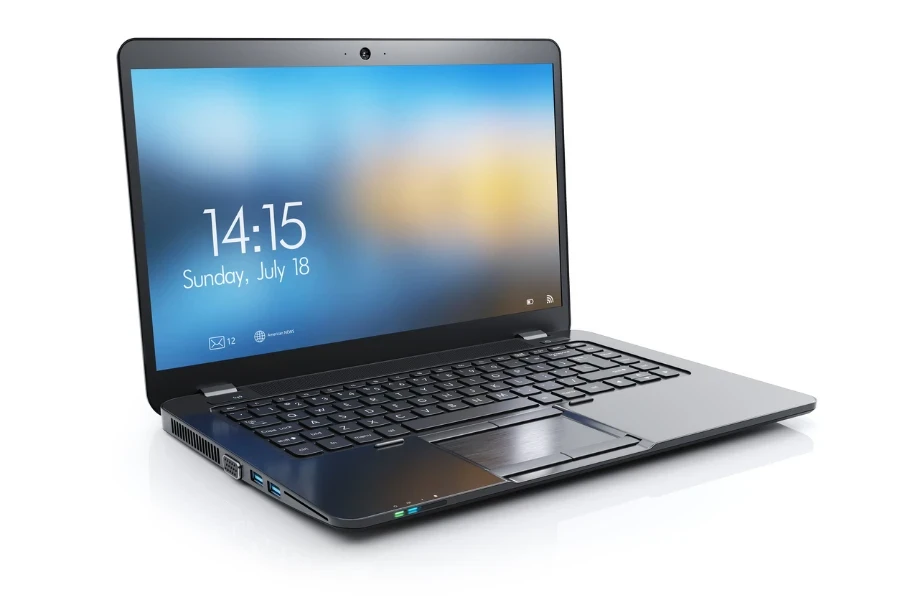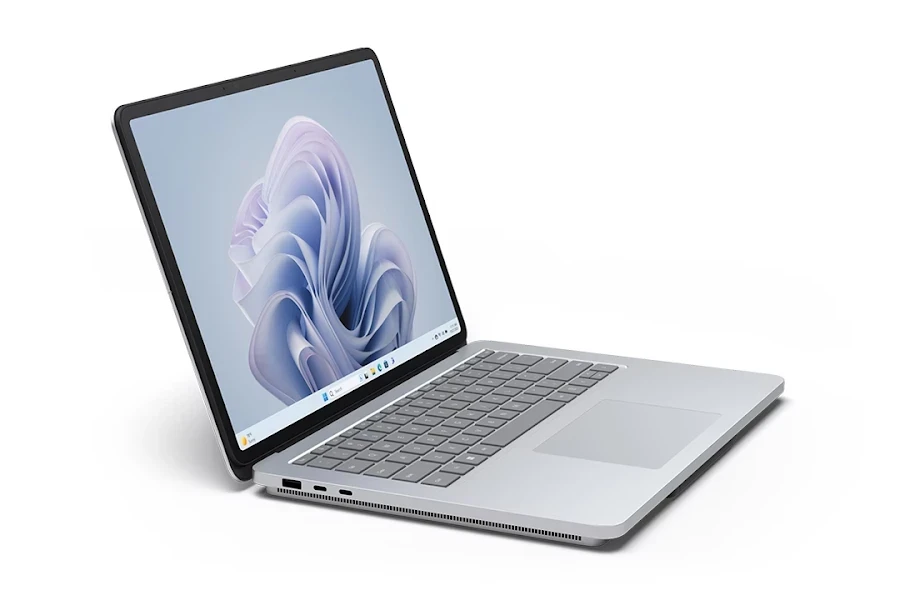In the dynamic landscape of 2024, personal and home laptops have transcended beyond mere computing devices. They’ve evolved into powerful tools, seamlessly integrating into our professional lives, driving productivity, fostering collaboration, and enabling swift decision-making. For businesses, selecting the right laptop isn’t just about technical specifications; it’s about harnessing a tool that amplifies efficiency, meets diverse operational needs, and ultimately, bolsters the bottom line.
Table of Contents
Global market pulse: Unveiling the numbers
Decoding the buyer’s mindset: Key selection criteria
Spotlight on top laptop innovations and features
Conclusion
Global market pulse: Unveiling the numbers

The laptop market, a cornerstone of modern business operations, has seen significant shifts. With the rapid advancements in technology and changing consumer preferences, understanding the market dynamics is crucial for businesses aiming to stay ahead.
Current market size and projected growth
The global laptop market reached an impressive value of about USD 147.45 billion in 2023. This growth trajectory is expected to continue, with projections indicating a compound annual growth rate (CAGR) of 4.7% from 2024 to 2032. Such robust growth is attributed to various factors, including falling product prices and enhancements in internet infrastructure, making laptops more accessible to a broader audience.
Leading regions and their market share
North America and Europe have been significant contributors to the global laptop market. During the pandemic, these regions witnessed an extraordinary surge in laptop sales, driven by the shift to remote working, online education, and a heightened demand for gaming. For instance, the European Union, in collaboration with the Croatian Academic and Research Network (CARNET), facilitated distant learning by providing over 6,000 students and 920 teachers with laptops and other essential devices. Moreover, the demand for laptops equipped with the latest hardware, software, and modern designs is on the rise, especially for models that are thin, lightweight, and powered by new-generation processors.

Consumer behavior trends
Consumer behavior has been evolving, especially in the Asia Pacific region, with countries like India and China leading the charge. The proliferation of better internet infrastructure in these regions has significantly boosted consumer demand. Furthermore, the rising demand for specialized laptops, such as those for gaming and content creation, has encouraged market players to introduce innovative products. For instance, in 2021, Asus launched the ProArt series in India, targeting content creators and aiming to expand its market share in the consumer PC segment. The increasing focus on digitization, foreign direct investment flows, and domestic manufacturing are also pivotal factors propelling the laptop market in these emerging regions.
Decoding the buyer’s mindset: Key selection criteria

Performance metrics: Beyond just speed
When it comes to laptop performance, the central processing unit (CPU) is the heart of the machine. The CPU’s capabilities determine the speed and efficiency of tasks. Intel’s 13th-generation CPUs, such as the i7-13700H, are making waves. These chips are hybrid designs, boasting a mix of performance and efficiency cores. On the other hand, AMD’s fifth-generation mobile Ryzen 7000 Series CPUs are also noteworthy, though they might be rarer in laptop offerings. For the average user, a midrange CPU, like the Core i5-1350P with its 12 cores, should suffice for most tasks.
Display and graphics: The visual revolution
The graphics processing unit (GPU) is responsible for rendering images on a laptop’s screen. While many laptops come with integrated graphics, higher-end models feature discrete GPUs for enhanced performance. Nvidia’s GeForce RTX 4000 Series, including models like the RTX 4050 and 4080, will be prevalent in premium laptops. These GPUs are designed for intensive gaming and creative applications. Display technology has also seen significant advancements. Beyond the standard resolutions like Full HD and 4K UHD, innovations like OLED and mini-LED are enhancing visual experiences. High refresh rates, reaching up to 480Hz, are becoming more common, ensuring smoother visuals in gaming and video playback.
Portability and design: The aesthetics of modern laptops
The term “ultrabook” has become synonymous with lightweight and portable laptops. Originally a specification by Intel for ultra-light laptops, the term now broadly refers to compact, lightweight laptops designed for easy transport. These machines prioritize battery life, portability, and a slim profile. While they might not always boast the most powerful specs, their design makes them ideal for professionals on the move.

Battery life: The lifeline of mobility
Battery life is a crucial factor for users who rely on their laptops for extended periods without access to a power source. While the exact battery life can vary based on usage and specific tasks, premium laptops often prioritize longer battery life. This ensures that users can work, play, or stream without constantly worrying about the next charge. For instance, Apple’s MacBook Pro is known for its combination of performance and extended battery life, making it a top choice for many professionals.
Price points: Balancing cost and value
Laptops come in various price brackets, each offering a different balance of cost and features. Entry-level laptops, priced at $500 or less, are ideal for basic tasks and often feature competent construction despite their low cost. Mainstream laptops, ranging from $500 to $1,500, offer a balance of performance and features, making them suitable for a broad range of users. Premium laptops, priced above $1,500, provide top-tier performance, build quality, and features, catering to power users and professionals. For instance, the Dell XPS 13 and MacBook Air M2 are notable mentions in the mainstream category, while the Dell XPS 15 and MacBook Pro are standout options in the premium range.
The modern laptop landscape is vast and varied. From performance metrics to design aesthetics, there’s a lot to consider when selecting the perfect machine. By understanding the key selection criteria, business professionals and online retailers can make informed decisions that cater to their specific needs and preferences.
Spotlight on top laptop innovations and features
The year 2024 has been a whirlwind of technological advancements in the laptop industry. As we delve deeper into this year’s innovations, it’s clear that the future of laptops is brighter than ever.
The reigning champions: Leading laptop models of 2024
Alienware has made a significant splash with its new m18 gaming rig, the first of its kind to feature AMD’s RX 7900M graphics. This GPU, combined with the Ryzen 9 7945HX mobile CPU, has showcased impressive power in tests. The m18 also boasts user-replaceable memory and storage, a QHD 165Hz or FHD 480Hz display, an FHD webcam, and an optional CherryMX mechanical keyboard. With a starting price of $2,799, it’s positioned as one of the most potent gaming laptops on the market.
On the other hand, Framework has introduced an innovative approach, allowing users to transform their Intel laptop into an AMD one. This transformation, which took experts less than 30 minutes, signifies the growing trend of customization and adaptability in the laptop industry.

Breakthrough technologies: What’s new on the horizon?
Microsoft’s Surface Laptop Studio 2 has introduced Adaptive Touch, a feature designed to enhance accessibility. This tool customizes features like click zones, click sensitivity, and palm rejection, making the laptop’s touchpad more user-friendly, especially for those with limited hand mobility.
Acer’s Nitro gaming laptops, particularly the flagship Nitro V 15, have been upgraded with Intel 13th-Gen Core processors, Nvidia GeForce RTX 40-series GPUs, and up to 32GB of DDR5 RAM. With a starting price of $699.99, it offers an attractive combination of performance and affordability.
Customization and upgrades: Tailoring to consumer needs
The Framework Laptop 16 has emerged as a promising contender in the realm of upgradable gaming laptops. Its modular design allows users to swap out the GPU in mere minutes, showcasing the potential for future upgradability and customization in the laptop industry.
Conclusion
Reflecting on the current landscape, it’s evident that the laptop industry is undergoing a transformative phase. The emphasis on customization, upgradability, and technological advancements underscores the industry’s commitment to meeting diverse consumer needs. As online retailers and business professionals navigate this dynamic market, staying abreast of these trends will be crucial. The future beckons with the promise of even more innovations, and it’s an exciting time to be part of this ever-evolving journey.



